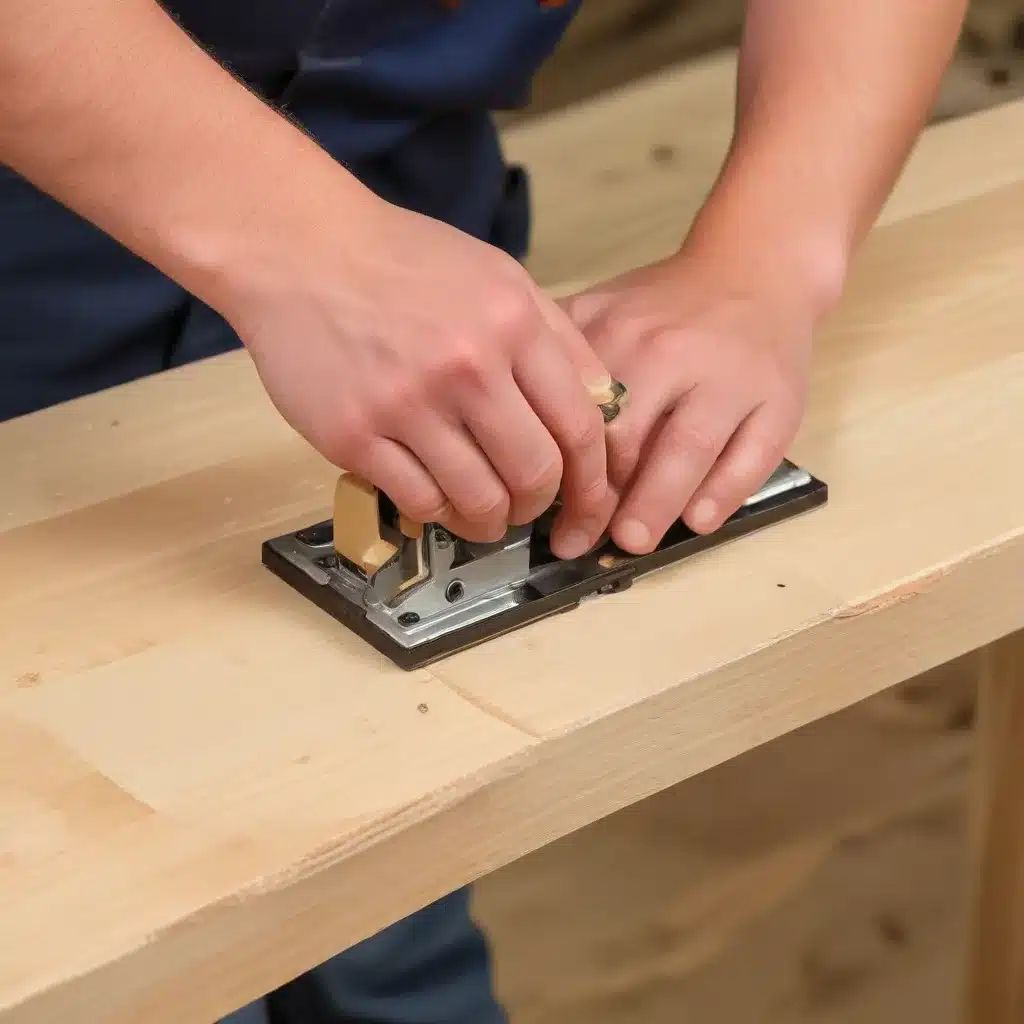
As an experienced woodworker and craftsman, I’ve had the privilege of exploring a wide range of woodworking techniques and tools. Today, I want to focus on an often overlooked but incredibly useful tool – the biscuit joiner. While some may dismiss it in favor of more expensive options, I’m here to share my insights on why the humble biscuit joiner deserves a place in every woodworker’s arsenal.
Biscuit Joiners: The Unsung Heroes of Woodworking
When it comes to woodworking, the biscuit joiner is often overshadowed by its more glamorous counterparts, like the Festool Domino or dovetail joints. However, I’ve found that this little tool can pack a serious punch when it comes to creating strong, seamless wood-to-wood connections. The beauty of the biscuit joiner lies in its simplicity and versatility.
One of the key advantages of the biscuit joiner is its affordability. Let’s be honest, not all of us can justify the hefty price tag of a Festool Domino, no matter how tempting it may be. The biscuit joiner offers a more budget-friendly solution without sacrificing the quality of your woodworking projects.
Mastering the Biscuit Joiner: Techniques and Tricks
Using a biscuit joiner may seem straightforward, but there are certainly a few tricks to unlock its full potential. The first step is to ensure that your biscuit joiner is properly aligned and calibrated. Take the time to familiarize yourself with the tool’s settings and practice on scrap pieces to get a feel for the process.
One of the most crucial aspects of biscuit jointing is the placement of the biscuit slots. The key is to position them strategically, ensuring that they provide maximum support and alignment for your project. I generally recommend placing the biscuits about 6-8 inches apart, depending on the size and complexity of your workpiece.
When it comes to cutting the biscuit slots, accuracy is paramount. Take your time, and use a steady, controlled motion to ensure that the slots are perfectly aligned. Remember, the better the alignment, the stronger and more seamless your final joint will be.
Biscuit Joiner Techniques for Stronger Connections
Now, let’s dive into some specific techniques that can help you take your biscuit jointing to the next level.
Edge Glue-ups
One of the most common applications for a biscuit joiner is in edge glue-ups. Whether you’re working on a tabletop, a cabinet door, or any other project that requires joining multiple boards, the biscuit joiner can be a lifesaver. By strategically placing the biscuits along the edge of your boards, you can create a strong, stable connection that will hold up to the rigors of everyday use.
Miter Joints
Biscuit joiners are also incredibly useful when it comes to creating miter joints. These angled connections can be tricky to align, but the biscuit joiner can help you achieve a perfect fit. Simply cut the biscuit slots on the angled edges of your workpieces, and the biscuits will provide the necessary alignment and support to ensure a tight, seamless joint.
Butt Joints
While biscuits are often associated with edge glue-ups, they can also be incredibly helpful in creating strong butt joints. By cutting biscuit slots perpendicular to the end grain of your boards, you can create a robust connection that will resist the stresses of everyday use. This technique is particularly useful for projects like cabinet face frames, where a sturdy butt joint is essential.
Maintaining Your Biscuit Joiner: Keeping It in Top Shape
Like any tool, your biscuit joiner requires proper maintenance to ensure it continues to perform at its best. Regular cleaning and blade sharpening are crucial to keep your biscuit joiner cutting cleanly and precisely.
After each use, take a few minutes to clean the tool thoroughly, removing any dust or debris that may have accumulated. This will help prevent the buildup of residue, which can lead to inaccurate cuts and premature wear on the components.
Additionally, it’s important to keep a close eye on the condition of your biscuit joiner’s blade. Over time, the blade will become dull, which can result in ragged, uneven cuts. To maintain optimal performance, consider having the blade professionally sharpened or replace it with a new one when necessary.
Sustainable Woodworking: Embracing Eco-Friendly Practices
As a conscious woodworker, I’m always on the lookout for ways to incorporate more sustainable practices into my craft. The biscuit joiner can be a valuable tool in this regard, as it allows you to create strong, durable connections without the need for excessive fasteners or hardware.
By using biscuits instead of nails or screws, you can reduce the amount of metal used in your projects, which not only makes them more environmentally friendly but also creates a cleaner, more visually appealing aesthetic. Additionally, the precise cuts made by a biscuit joiner can minimize wood waste, as you’ll be able to maximize the use of your materials.
Conclusion: Unlocking the Power of the Biscuit Joiner
In the world of woodworking, the biscuit joiner may not be the flashiest tool, but it certainly packs a punch when it comes to creating strong, reliable connections. As an experienced craftsman, I’ve come to appreciate the versatility and cost-effectiveness of this underrated tool.
Whether you’re working on a simple edge glue-up or tackling a more complex project, the biscuit joiner can be a valuable ally in your woodworking arsenal. By mastering the techniques and tricks I’ve outlined, you’ll be well on your way to producing high-quality, durable projects that will stand the test of time.
So, the next time you’re contemplating your woodworking tool lineup, don’t overlook the humble biscuit joiner. This unsung hero may just be the key to taking your woodworking skills to new heights. Happy crafting!

